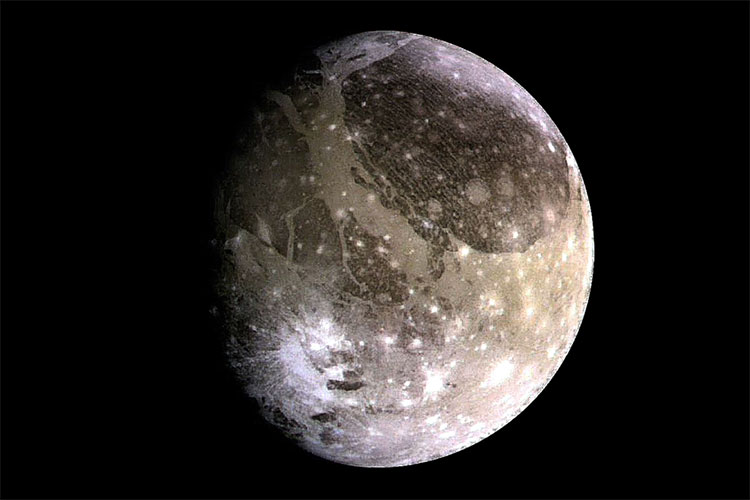Electric waves from Jupiter's moon threaten the spacecraft
"Chorus waves" can create sounds like melodious birds singing but can also fire "killer" electrons that attack Jupiter exploration spacecraft.
Mysterious electromagnetic waves on Jupiter's largest moon - Ganymede - have been recorded by NASA's Galileo spacecraft. A multinational research team analyzed data about this wave and named it "chorus waves", the "chorus wave".

Close up of Jupiter's biggest moon - (photo: NASA).
The reason for using the word chorus - the term for the chorus in a song - is because if a similar wave spreads on the earth, we humans can hear it as a melodious music created from the chirping of birds at dawn. At the same time, it can create colorful magical light in the night sky.
But for space scientists, this kind of wave with a beautiful name is a threat. It releases countless "killer" electrons into space, which can damage the spacecraft. The chorus wave is described as "unusually intense".
According to the professor - Dr. Yuri Shprits, from the Helmholtz Center in Potsdam (Germany), the chorus wave was created in part by Jupiter's strong magnetic field and the moons orbiting it.The chorus wave is estimated to be millions of times stronger than the types of magnetic waves found on our Earth .
The co-author Richard Horne of the British Antarctic Survey Agency explained that just a small fraction of the chorus wave escapes the proximity of the Ganymede moon, they can accelerate, creating energy particles. very high, releasing electrons moving at extremely fast speeds in Jupiter's magnetic field. That is the "killer" electrons that Jupiter's probe spacecraft should be careful of.
- Two spacecraft about to plunge into the moon to
- NASA returned to the moon
- American private company takes spacecraft to the Moon
- NASA 'moon' twins
- Israel launched a spacecraft to the Moon in 2019
- European companies want to take spacecraft to the Moon in 2018
- Chinese spacecraft set a record in the Moon for the longest time
- China revealed a model of spacecraft to send people to the Moon
- India successfully launched the spacecraft to the Moon
- China launches spacecraft to explore the dark areas of the Moon
- Three electric cars used to roll on the Moon
- Couple of spacecraft studying the moon
 Van Allen's belt and evidence that the Apollo 11 mission to the Moon was myth
Van Allen's belt and evidence that the Apollo 11 mission to the Moon was myth The levels of civilization in the universe (Kardashev scale)
The levels of civilization in the universe (Kardashev scale) Today Mars, the sun and the Earth are aligned
Today Mars, the sun and the Earth are aligned The Amazon owner announced a secret plan to build a space base for thousands of people
The Amazon owner announced a secret plan to build a space base for thousands of people